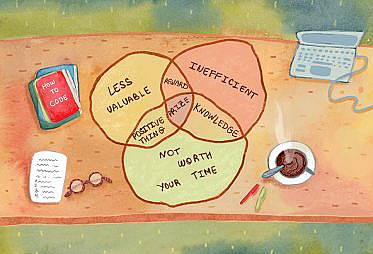I have often found that it is difficult to explain to business stakeholders what exactly a data analyst on my analytics team does. And even beyond that, I have sometimes found it difficult to explain to the data analysts themselves why their job is so valuable to the business and what their future career opportunities might look like.
Data analysts at early stage, tech-adjacent start ups have unique jobs that allow you to work on a bunch of different things which then opens up a ton of opportunities for career progression, and in this post I will talk about all of the different roles data analysts play and what that means for future opportunities.
On Data teams of fewer than 5 people and company size roughly 50-150, data analysts perform the job functions of:
- Business Analysts
- EngineersProduct
- Managers
- Data Analysts / Scientists
To be sure, analysts don’t perform these roles in equal parts all the time. Some weeks they write data transformations (Eng), other weeks they coordinate cross-functionally (PM), and yet other weeks they perform pure analysis (BA or DA). But on the whole, analysts will spend much of their time juggling these responsibilities. Thinking about how you spend your time as an analyst can help you better identify what options are available for you and where you’d like to take your career.
Business Analyst
The best analysis is informed by domain expertise. Business analysts typically sit directly on product, sales or operations teams and thoroughly understand their stakeholders’ problems. The context gained by these close partnerships help hone their intuition and enrich their analysis. In this capacity, analysts are able to:
- Identify which business problems matter and which don’t which helps with prioritization.
- Understand what’s feasible, from a business perspective, to fix. This skill can be underestimated – analysts are less likely to propose solutions that are out of sync with business reality.
- Gain trust of their stakeholders, helping improve communication cross-functionally and reduce coordination costs.
Business analysts ensure that operations teams aren’t singularly focused on executing. They are instrumental in helping teams step back and improve processes in order to exploit areas of opportunity. While data analyst responsibilities often overlap with those of a business analyst, a good data analyst also builds models, performs experiments, works cross functionally and occasionally spikes on more technical projects – all tasks that require time. Business analysts, however, operate on their business team’s schedule, requiring quick turn around and answers to very specific questions. A business analyst might answer the question, “Why did sales drop last week?”, whereas a data analyst works on a question like, “What is the single biggest driver within our control to increase sales?” The latter type of question could require weeks of work; the former perhaps a few hours.
Signs that a data analyst may be spending too much time as a business analyst include constantly putting out fires for the same stakeholder, spending more time in Excel and less in SQL, and in general working on short term projects with urgent deadlines. If you find yourself in this boat, be sure to raise it to your manager in order to alert them that you’re drifting towards being a business analyst – presumably not what you were hired for!
Engineer
Data analysts write efficient SQL, have an understanding of the codebase language (Python, Ruby, etc…), and basic software engineering best practices such as version control (e.g. git), code review, testing and logging errors. Modern Analytics teams will also likely work in an agile environment, as will the Engineering teams. As the Analytics team grows, it will become more important to ensure that their code is scalable, clean and readable by future team members.
Data transformations – transformations that take in application or third party data and transform it according to business logic – used to be the domain of the Data engineer, and in larger organizations it still is, though tech companies are more likely to hire an Analytics Engineer to do this work. But until the Data team gets large enough to specialize, data analysts perform these tasks. If someone wants to know, “How many new users coming from Facebook in the past 90 days have completed steps A and B and then converted?”, an analyst will write that transformation logic. All for the better, since they are closer to the business and can use their improved intuition and context to write the best transformations. Analysts also need to understand data modeling and how their data warehouse works – something with which even many engineers will have little experience.
Data analysts who spend time writing code and perfecting software engineering practices must balance these responsibilities against stepping back and thinking holistically about the business problem. Analysts should be wary of over-engineering problems, and remember that their core competency is to deliver high value analysis and drive business decisions.
Product/Project Manager
Data analysts likely work in a matrix or pseudo-matrix organization, reporting to a Data lead but with dotted lines to the business. Even on a centralized Data team, there are likely several non-Data teams that use the result of the work produced by the analyst to make decisions. This means that data analysts need to manage their own workloads, scope their projects, balance competing priorities, communicate cross-functionally to set expectations, and meet with stakeholders consistently. Engineers usually have Product Managers who can help with all of these tasks, allowing them to focus purely on the code and architecture.
Project management skills improve the quality of work produced by data analysts, as does constant communication directly with stakeholders. Similar to a business analyst, embedded data analysts excel at knowing what the next model to build is, dataset to explore or business question to answer – skills that strong product managers will have. But these responsibilities can also add a lot of administrative overhead – more meetings, documentation and emails, all of which take away from the core job of an analyst – analyzing!
Data Analyst
The primary function of a data analyst – analysis – consists of many things. A non-exhaustive list includes:
- Exploring data and making visualizations to clearly communicate key insights and trends.
- Thinking about problems and experimenting with different models to better understand underlying relationships and make better decisions.
- Going down rabbit holes, and realizing 2 days were wasted going down rabbit holes.
- Confidently providing recommendations and insights, usually accompanied by a polished presentation.
- Testing and validating those recommendations, and updating results over time as the underlying data and business evolves.
These exploratory tasks require time and space to think critically and creatively, not dissimilar to the work of a researcher. Unlike researchers however, analysts need to ensure they are getting deliverables out the door. It’s a fine balance to strike, which makes the job of an analyst all the more interesting.
To perform analysis well and efficiently presumes that tools are built (engineering), problems are scoped (project management), and domain knowledge has been acquired (business analysis). Thus a strong working knowledge of all the above job functions allows a Data Analyst to become more than a researcher, providing well-designed and tested insights and recommendations to the rest of the organization.
Where to next?
Part of what makes being a data analyst a unique job are the potential future career paths. Based on the roles outlined above, below are some natural progressions:
- Business-Ops: If you enjoy getting deeper into a specific part of the business, then you should look for domain oriented jobs that are uniquely dependent on data. Example jobs of this type include Supply Chain logistics, Performance Marketing, Operational Improvement, or Strategy and Operations. Folks with an analytical background are always in high demand for these jobs.
- Data Science: If you lean more technical, then this is an obvious choice. In non-research roles, data scientists with strong business backgrounds almost always trump data scientists that are purely technical. Business-minded folks know where to look for the right problems, how to scope work appropriately, how to communicate with non-technical folks and how to tailor solutions to be complex or simple.
- Analytics or Data Engineer: For analysts that enjoy spending their time building data models and optimizing the data warehouse, the job of Data Engineer is available. Analytics Engineering is a role that many former analysts are finding their way to, while becoming a Data Engineer might require the analyst to learn their technologies even deeper. Since data analysts are essentially stakeholders of Data Engineers, their background can be a huge differentiator for Data Engineering teams.
- Product Manager: For folks who enjoy user feedback, collaborating with cross functional teams, ruthlessly prioritizing and building consensus (all skills that a successful analyst needs), there’s Product Management. This could be as a “data product manager” or a more traditional product manager. There’s more work to do here to transition into a purely product role, but coming from an analytics background is a great start.
- Data Leader: Remain in Data and move up into managerial, directorial and VP/executive level roles. These roles begin to encompass data science, data engineering and other data-adjacent functions (governance, security, etc…) in addition to analytics. As a Data leader, you’ll be setting the Analytics strategy for your organization, selecting the right technologies and growing a team of data professionals.
Each job above builds on top of the work that a data analyst would have performed as they become more experienced. There are certainly more paths one can take, but the above are the most common. As a general rule of thumb, it’s easier to transition from more technical jobs to less technical, than vice versa, and working in analytics gives you a strong, technical start.
Conclusion
The work performed by a data analyst spans many different job functions. Analysts need to juggle being technically sound with being thoughtful business partners with having strong project management skills and learning the domain of their business. The skills gained as an analyst will set folks up well to pursue various career paths should they choose to leave analytics. This makes being a data analyst a great choice as a career in tech!






